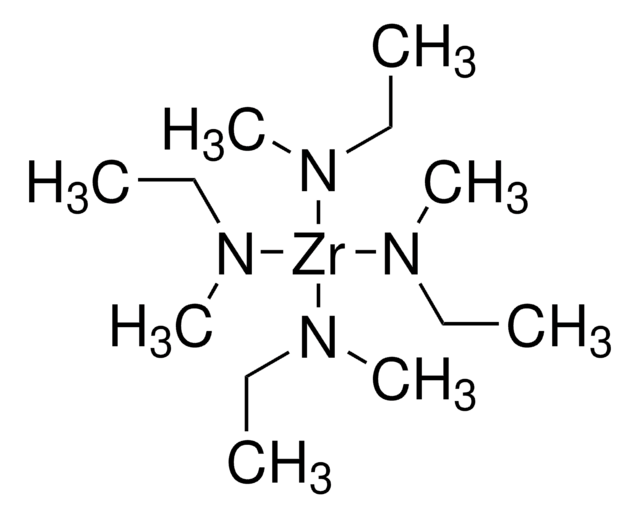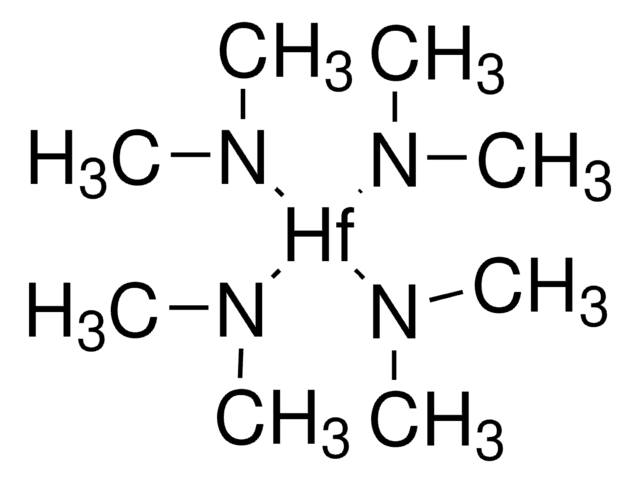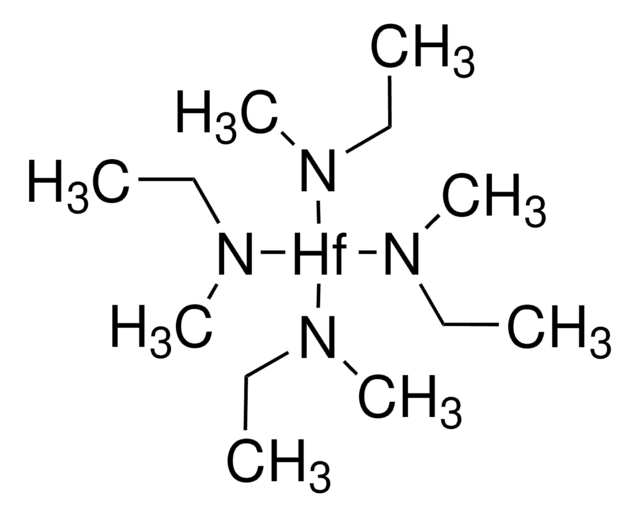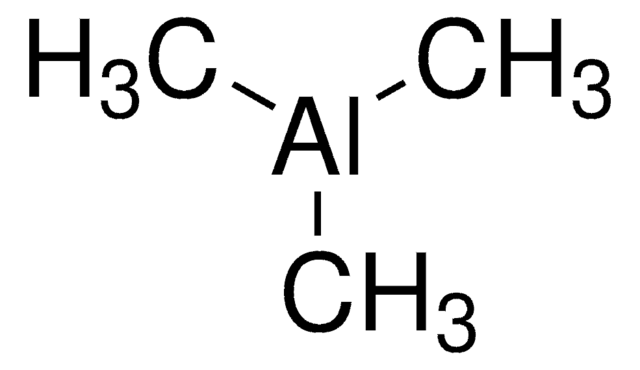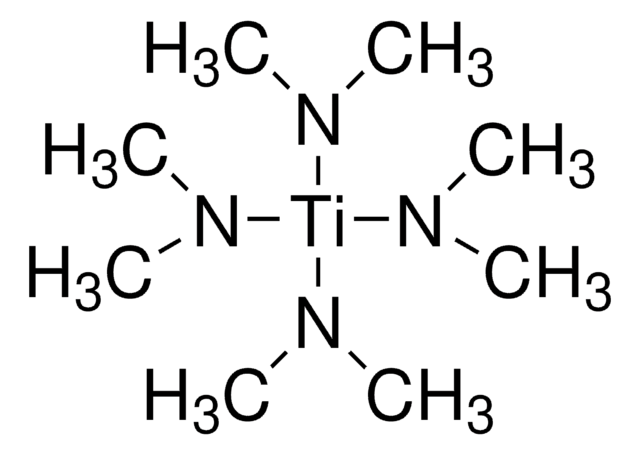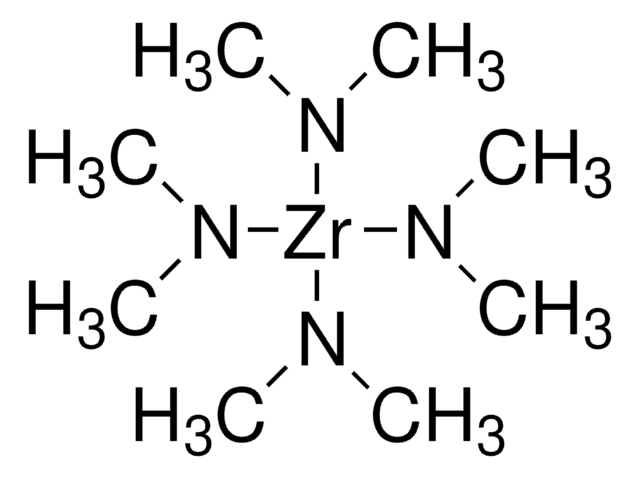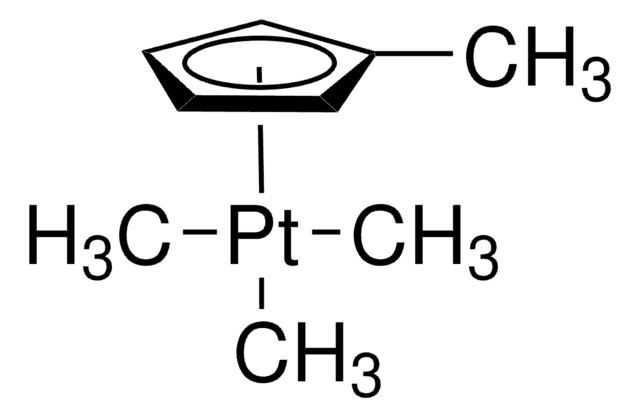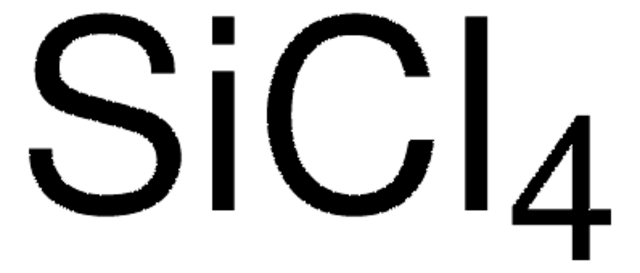725544
Tetrakis(ethylmethylamido)hafnium(IV)
packaged for use in deposition systems
Synonyme(s) :
TEMAH, Tetrakis(ethylmethylamino)hafnium(IV)
About This Item
Produits recommandés
Niveau de qualité
Forme
liquid
Pertinence de la réaction
core: hafnium
reagent type: catalyst
pb
78 °C/0.01 mmHg (lit.)
Pf
<-50 °C
Densité
1.324 g/mL at 25 °C (lit.)
Température de stockage
2-8°C
Chaîne SMILES
CCN(C)[Hf](N(C)CC)(N(C)CC)N(C)CC
InChI
1S/4C3H8N.Hf/c4*1-3-4-2;/h4*3H2,1-2H3;/q4*-1;+4
Clé InChI
NPEOKFBCHNGLJD-UHFFFAOYSA-N
Vous recherchez des produits similaires ? Visite Guide de comparaison des produits
Description générale
Application
TEMAH is well-suited for ALD because its adsorption is self-limiting on a number of substrates including glass, indium-tin oxide(ITO), Si(100), and two-dimensional materials like MoS2. TEMAH also conveniently reacts with either water or ozone as the oxygen-source in the ALD process.
Caractéristiques et avantages
- Steel cylinder connected to 316 stainless steelball-valve
- 1/4 inch male Swagelok VCR connections
Mention d'avertissement
Danger
Mentions de danger
Classification des risques
Acute Tox. 4 Oral - Eye Dam. 1 - Flam. Liq. 2 - Skin Corr. 1B - STOT SE 3 - Water-react 1
Organes cibles
Respiratory system
Risques supp
Code de la classe de stockage
4.3 - Hazardous materials which set free flammable gases upon contact with water
Classe de danger pour l'eau (WGK)
WGK 3
Point d'éclair (°F)
51.8 °F - closed cup
Point d'éclair (°C)
11 °C - closed cup
Faites votre choix parmi les versions les plus récentes :
Déjà en possession de ce produit ?
Retrouvez la documentation relative aux produits que vous avez récemment achetés dans la Bibliothèque de documents.
Les clients ont également consulté
Articles
Atomic Layer Deposition (ALD) is a coating technology that allows perfectly conformal deposition onto complex 3D surfaces. The reason for this uniform coating lies in the saturative chemisorption of sequential cycles of precursor vapors.
Nanocomposite Coatings with Tunable Properties Prepared by Atomic Layer Deposition
Thin film photovoltaic devices have become increasingly important in efficiently harnessing solar energy to meet consumer demand.
The properties of many devices are limited by the intrinsic properties of the materials that compose them.
Notre équipe de scientifiques dispose d'une expérience dans tous les secteurs de la recherche, notamment en sciences de la vie, science des matériaux, synthèse chimique, chromatographie, analyse et dans de nombreux autres domaines..
Contacter notre Service technique